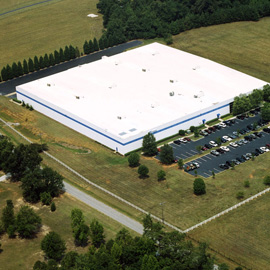Three Types of Adhesives Used in PSAs
If you work in a manufacturing facility, you have probably heard your employees ring out with this statement at one point or another, "The tape just doesn't work. We need tape that's efficient." And oftentimes, you may be presented with very little information as to exactly where the adhesive broke down. In this article, we hope to alleviate some of the pains of choosing the adhesive for your specific application.
There are generally three primary groups of adhesives that are used in the production of a PSA (pressure sensitive adhesive). These groups are: natural rubber adhesives, synthetic rubber adhesives, and acrylic adhesives. Although these three groups of adhesives can vary, they each carry very specific characteristics. Understanding each will help to mitigate wrong decisions.
Natural Rubber Adhesive Basics
Natural rubber, by itself, is not tacky, nor is it an adhesive. Natural rubber always requires a tackifier, or achemical compounds used in formulating adhesives to increase the tack (the stickiness of the surface of the adhesive).Natural rubber adhesives are characterized by their extremely long polymer chains which allows the natural rubber to be very flexible, even at low temperatures. The long polymer chains also create the strength of the natural rubber adhesive.
Advantages:
- Excellent peel adhesion to non-polar and polar surfaces
- High immediate peel adhesion = short dwell time to final adhesion level
- High initial tack or "grab"
- Residue-free removability after application (e.g. masking tapes)
- Natural rubber adhesives are ideal in applications that are non-permanent and generally indoors.
Disadvantages:
- Poor cohesion at higher temperatures (T>70C)
- Moderate sheer resistance at elevated temperatures
- Poor ageing resistance
- Low environmental resistance to UV, Ozone and humidity
- Low chemical and solvent resistance
Synthetic Rubber Adhesive Basics
When talking about synthetic rubber, you may often hear these terms spoken of: SBS, SIS, Hot Melt, or SEBS. The synthetic rubber polymer is industrially manufactured. It is very unique in that there are two hard-end segments (styrene) and then a rubbery middle segment (Butadiene). The styrene ends determine the cohesiveness (or the internal strength of the synthetic rubber) while the rubbery middle segment determines the adhesiveness.
Similarly to the natural rubber adhesive, the synthetic rubber adhesive alone does not posses any adhesive properties, and must be combined with tackifier resins to create a PSA.
Advantages:
- High initial tack or grab
- Excellent peel adhesion to non-polar and polar surfaces
- High immediate peel adhesion = short dwell time to final adhesion level
- Transparent coatings possible
- Low cost (which is why a synthetic rubber adhesive is often referred to as a "hot melt" adhesive).
Disadvantages:
- Moderate shear resistance at elevated temperatures
- Low aging stability (but better than natural rubber)
- Low environmental resistance to UV, Ozone and humidity
- Moderateresistance to solvents and plasticizers
- No residue-free removability after application.
Acrylic Adhesive Basics
Acrylic adhesives are industrially manufactured, and thus can be manipulated based on the selection of the monomers used in the formulation. Unlike the natural and synthetic rubbers, acrylics are tacky by nature. They have long polymer chains which are cross-linked to increase their performance.
Advantages:
- High transparency
- High aging stability (acrylics do not yellow with age)
- High shear resistance at elevated temperatures
- High resistance to UV, ozone and humidity
- High resistance to solvents & plasticizers
- Very good peel adhesion to polar surfaces
- Best useful in long-term, outdoor applications
Disadvantages:
- Low immediate peel adhesion = longer dwell time needed
- Lower adhesion to non-polar substrates
- Moderate residue-free removability after application
In conclusion, it is always strongly recommended that operations test a tape prior to purchase. Speaking with our team of representatives can help narrow down the playing field and get you on your way to safe, productive and effective packaging.




